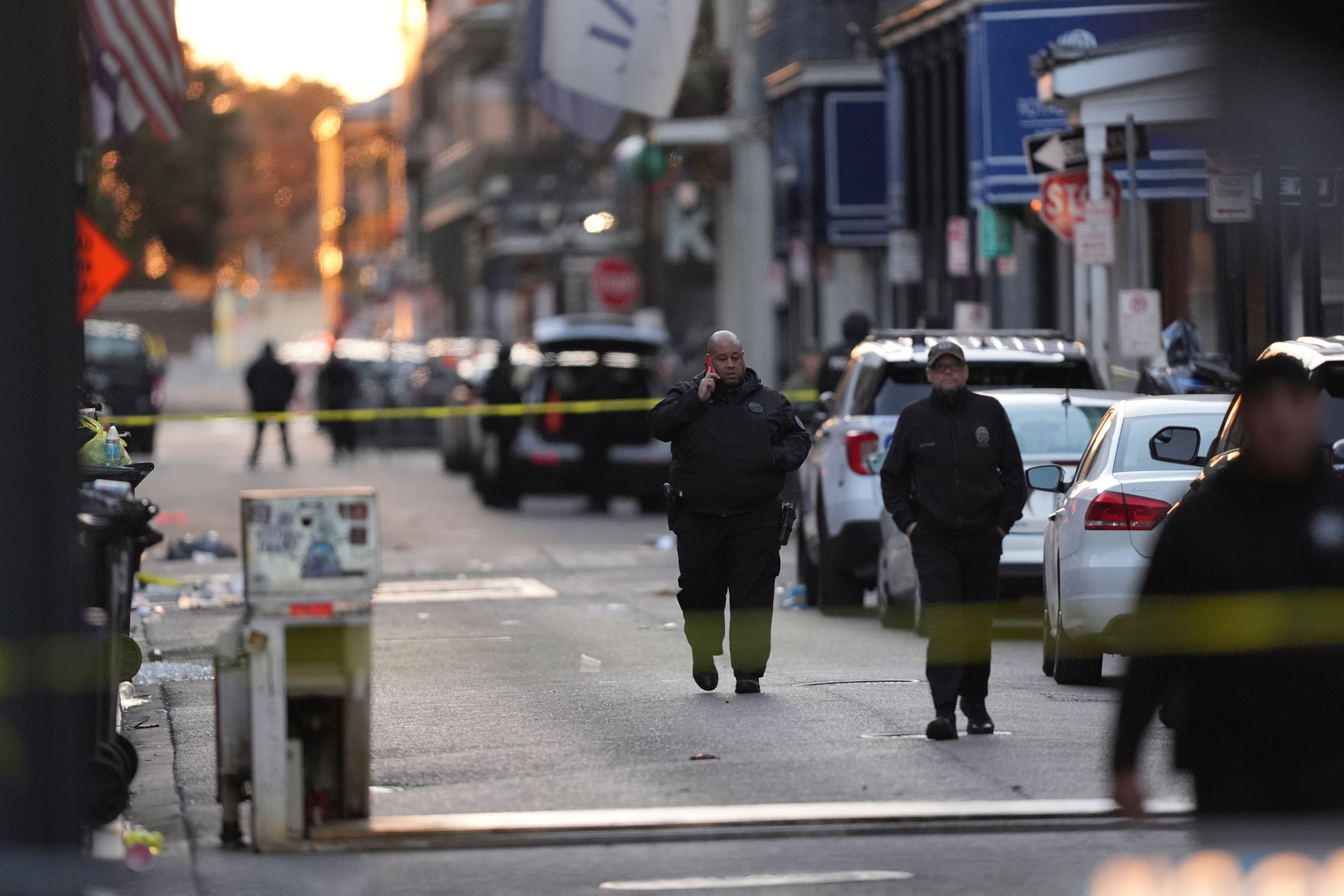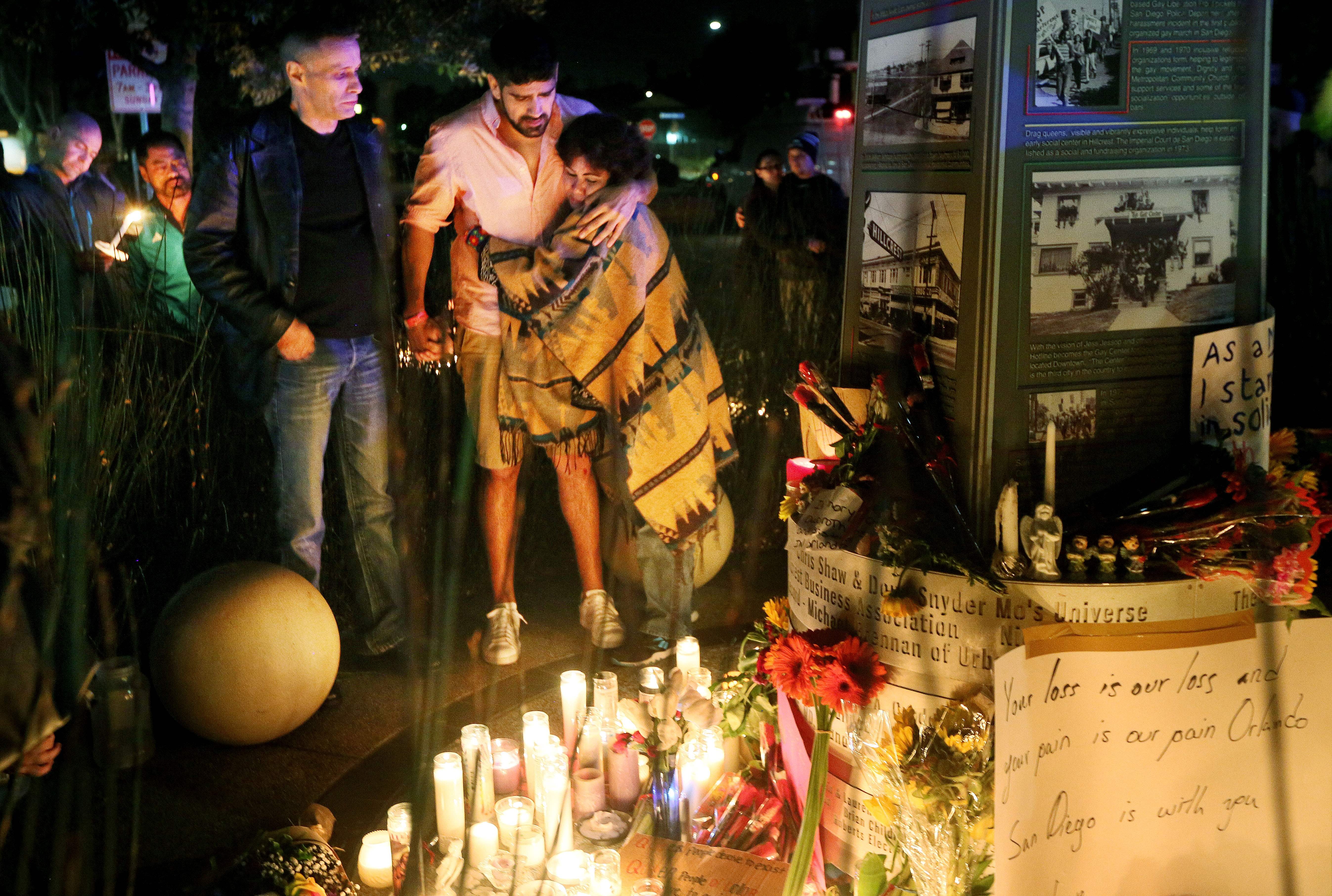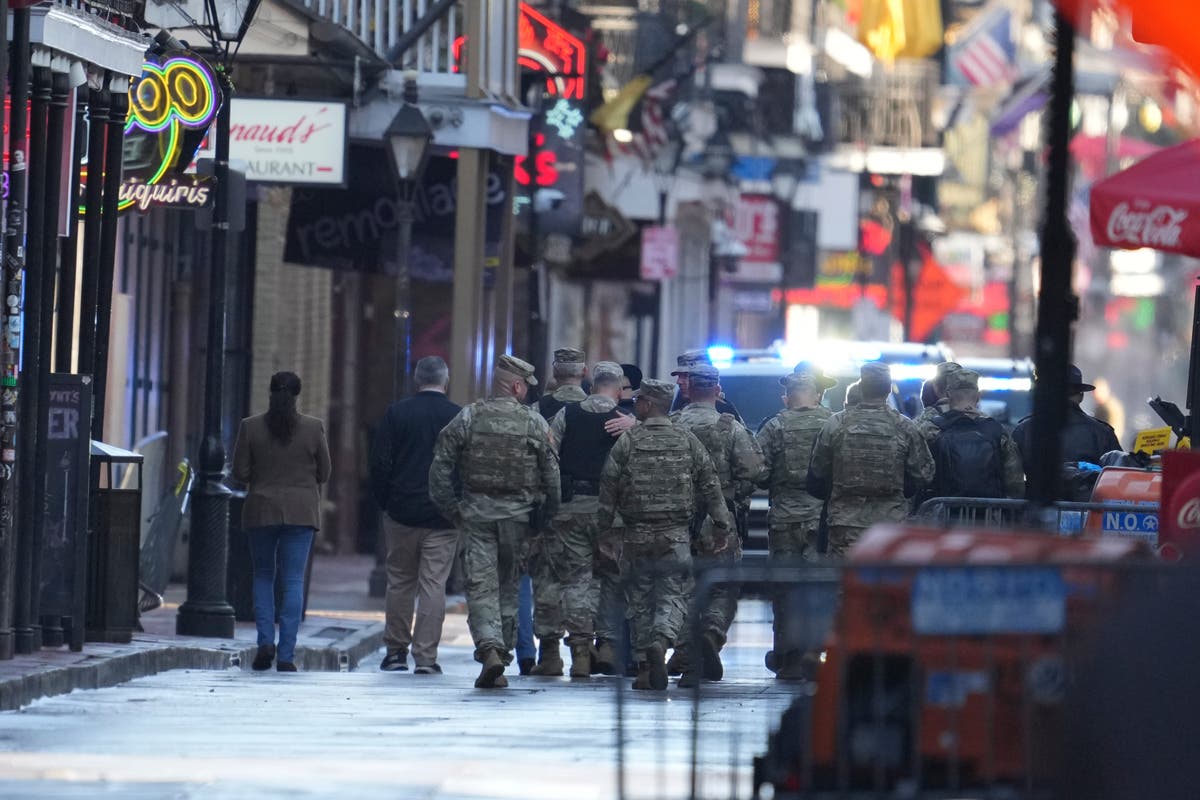The New Year’s Day attack in New Orleans that killed at least 14 people and injured 30 more has reignited fears about the terror threat posed by ISIS in the U.S. following years of relative quiet.
Shamsud-Din Jabbar, a 42-year-old U.S. Army veteran, has been named by authorities as the suspect. He carried an ISIS flag on the vehicle used to mow down pedestrians.
Addressing the nation following the attack, President Joe Biden said Jabbar posted videos to social media “indicating he was inspired by ISIS, expressing a desire to kill.”
But how much of a threat does the extremist Islamist militant group pose to Americans today?
ISIS once controlled a vast swathe of territory that stretched for thousands of miles across Iraq and Syria, ruling over its caliphate with terror, kidnap, extortion and propaganda on an industrial scale. After years of fighting, it was eventually defeated by a US-backed military coalition in 2019.
Nonetheless, experts say ISIS has remained a steady threat even as its territory has dwindled.
“I think this attack shows that they have a level of resiliency,” Seamus Hughes, an expert on terrorism and homegrown extremism at the National Counterterrorism Innovation, Technology, and Education Center, University of Omaha, Nebraska, tells The Independent.
“No one should argue that it is the same level of influence and power that it was when it controlled a vast territory and ran its own government, but it still has the ability to inspire, direct, and encourage attacks throughout Europe and the U.S.,” he adds.

The FBI has warned for some years that it is consistently conducting more than 1,000 active ISIS investigations in all 50 states, but the scale of support for the group in the US and internationally tends to ebb and flow with its success on the battlefield.
Hughes notes that 2016-2017, when ISIS controlled territory the size of the United Kingdom, was a “banner year” for the recruitment of American jihadists. Some 180 people in the US were charged with offenses relating to ISIS between 2014 and 2018.
ISIS operations vary between directed attacks — that is, those in which members are sent or coached to attack a specific target — and inspired attacks, in which a sympathizer will declare allegiance to the group prior to the attack, sometimes without any contact.
During those same years, ISIS sympathizers in the US were able to carry out several high-profile attacks, including a 2015 mass shooting in San Bernardino by married couple Rizwan Farook and Tashfeen Malik, and the 2015 shooting at Pulse nightclub in Orlando Florida, where 29-year-old Omar Mateen killed 49 people and wounded 53 others.

Since the collapse of the caliphate in 2019, the threat of ISIS attacks in the US appears to have dropped to a steady but consistent level. The last attack on U.S. soil linked to an ISIS sympathiser occurred in 2020, when a man opened fire at the Corpus Christi Naval Air Station in Texas.
“We’re basically back to where we were except for those two outlier years, meaning that we get about 12 to 2 dozen federal arrests and a couple of state-level arrests of individuals inspired by ISIS,” says Hughes.
Colin Clarke, author of After the Caliphate: The Islamic State & the Future Terrorist Diaspora, agrees that the threat never went away.
“Where we are is just this kind of steady state,” he tells The Independent. “We’ve been talking about this as a threat for a long time.”
And just as ISIS gained more attention and sympathy when it was capturing territory in 2016 and 2017, it has seen some successes in recent years that may have given it an impetus in recruitment and propaganda. The group made gains in Afghanistan last year. The fall of Bashar al-Assad in Syria last month has also created the potential for a resurgence.

“The more freedom of maneuver that they tend to have, the more operational space that they tend to have,” Clarke says. “There’s a correlation between that and an uptick in propaganda because then they start focusing on pumping this stuff out, and when it looks like they’re winning in certain places, they’re more likely to inspire followers and supporters to act.”
But Clarke adds that there are now fewer resources to deal with the ISIS threat than there were at the height of the group’s power.
“Counterterror budgets have kind of come back down to earth,” he says. “You could argue that they were inflated during the global war on terrorism, and this is just really returning to the norm. But I’ve noticed when I go down to Washington and meet with people in the Pentagon and the intelligence community, there are far fewer people thinking about counterterrorism, working on counterterrorism,” he says.
There has also been a change in focus in counter-terror operations and among experts since the fall of the caliphate, away from radical Islamist terror threats and towards far-Right and white supremacist groups, which have exploded in the past ten years.
A rise in domestic extremism under Donald Trump, which culminated with the attack on the US Capitol on January 6, brought about that shift. Many law enforcement and intelligence agencies, who for years have chased ISIS and Al-Qaeda across the globe, turned their attention closer to home.
“You have to put it in context of what the threat picture looks like in the US in general,” Hughes says. “You’ve still got a growing domestic terrorism threat from white supremacists and neo-Nazis, and the FBI says that their investigations have doubled in recent years on that. So the bureau is racking and stacking priorities in a threat picture that is not as clear as it was, say, 10 years ago.”
Both Hughes and Clarke agree that this attack may swing the pendulum back the other way and bring more of a focus on ISIS-inspired groups and individuals
“We always knew that they were there, and I think this puts the issue at the forefront of policymakers’ concerns now,” Hughes says.




